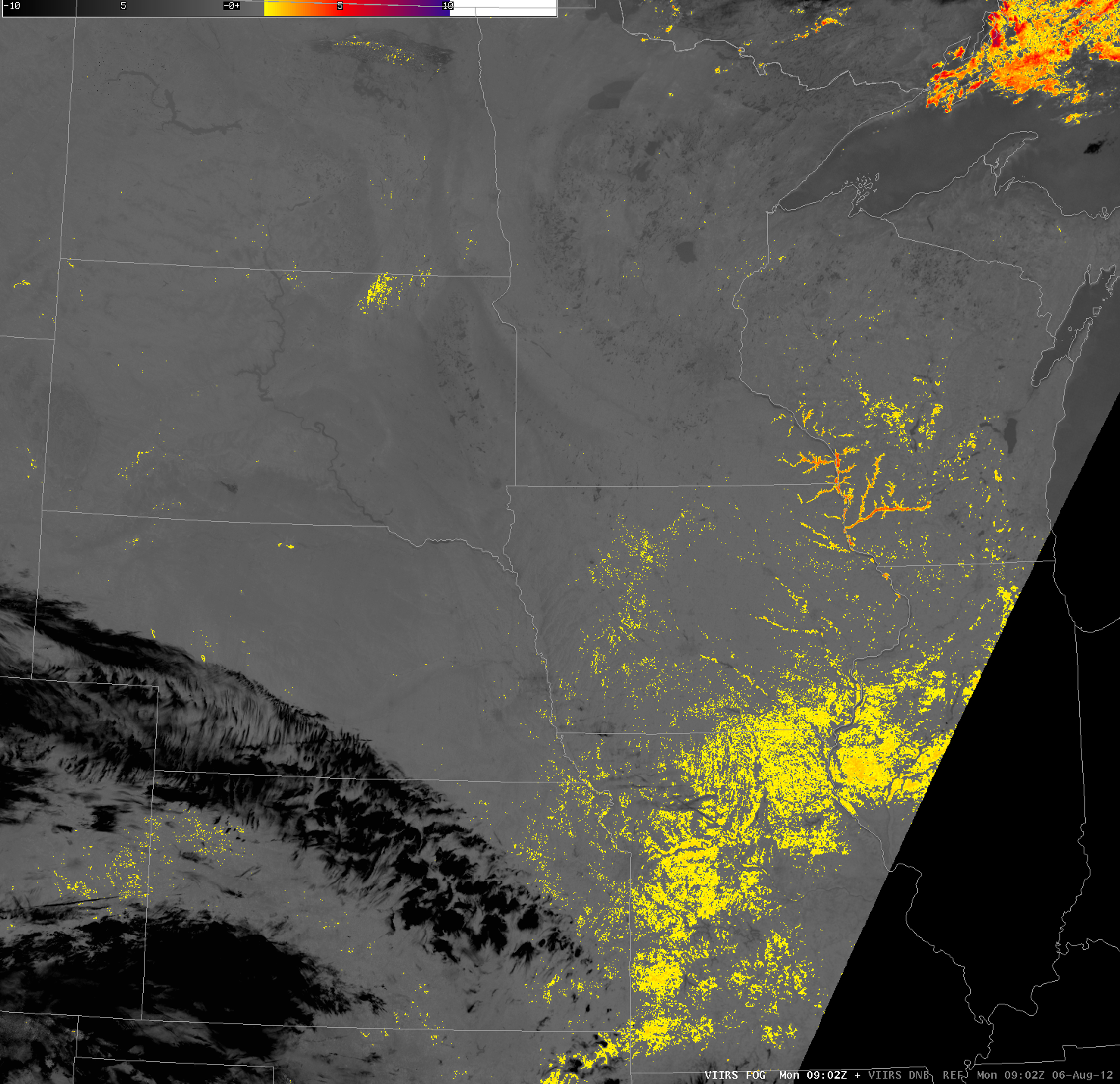Suomi/NPP Observations of fog

VIIRS Brightness Temperature Difference (between 11.35 and 3.74 µm) and DayNight Band (DNB) at 0902 UTC 6 August 2012 (click image to play animation)
The Visible-Infraread Imager Radiometer Suite (VIIRS) instrument on Suomi/NPP samples longwave radiation emitted at 11.45 µm and shortwave radiation emitted at 3.74 µm. Because liquid water clouds have different emissivity properties at those two wavelengths, the difference in brightness temperature can be used to determine the presence of clouds (such as fog and stratus) made up of liquid water droplets. (This figure shows the channels on VIIRS; the ‘fog product’ is the difference in brightness temperature between Band I4 and I5; both channels have nadir resolutions of about 400m). The fog product in the above image has a very strong signal over the Wisconsin and Kickapoo river valleys of southwest Wisconsin, the Upper Iowa River valley in northeast Iowa, and the Root River valley of southeast Minnesota as well as the Mississippi River and other smaller tributaries. There is also a signal over southern Iowa, western Illinois and central Missouri.
The Day-Night Band (DNB) on VIIRS senses reflected (and emitted) radiation at 0.7 µm with a native resolution of about 800 m. During times near the full moon, such as 6 August, there is sufficient reflected moonlight that the DNB can identify the regions of fog in the river valleys, and there is excellent validation between the DNB and the brightness temperature difference in the river valleys. However, the DNB does not show fog over southern Iowa, western Illinois or central Missouri. The brightness temperature difference there is caused by stray light; although the satellite on the dark side of the planet, it is high enough in space that it is illuminated by the Sun, and some of that solar radiation makes its way to the sensor, contaminating the signal. The Equatorward edge of the stray light zone is the obvious zone from southwestern Missouri westnorthwestward into northeast Colorado. The stray light zone is a region where a fused fog product, such as that developed for GOES-R, that uses numerical model output, can de-emphasize positive fog signals from satellite data in regions where the numerical output does not show high boundary layer relative humidity. Some examples of the GOES-R Fog Products using GOES-East and GOES-West are shown here.

